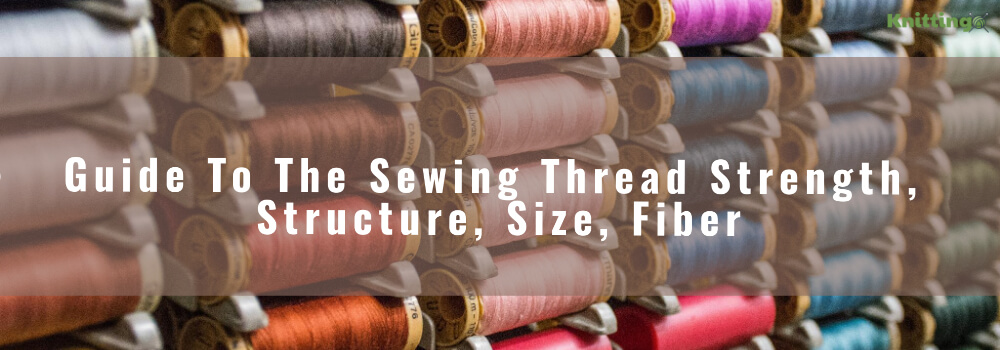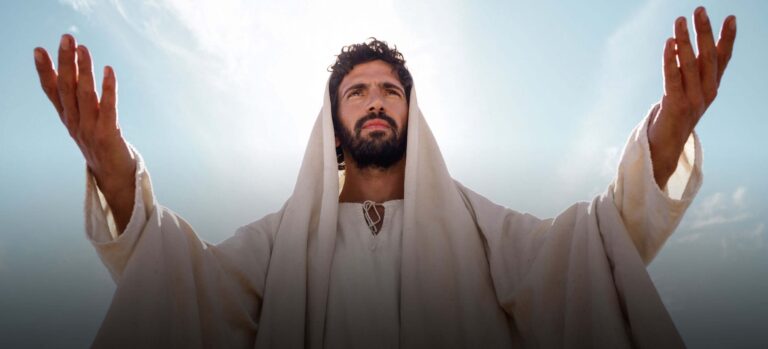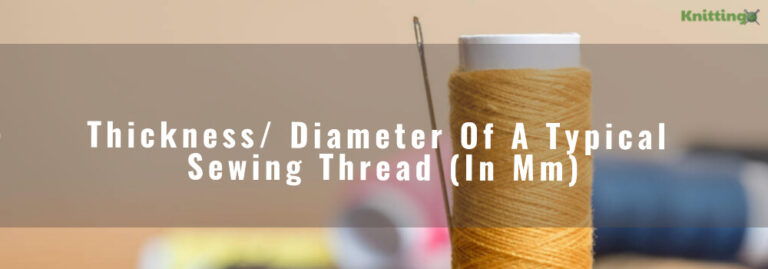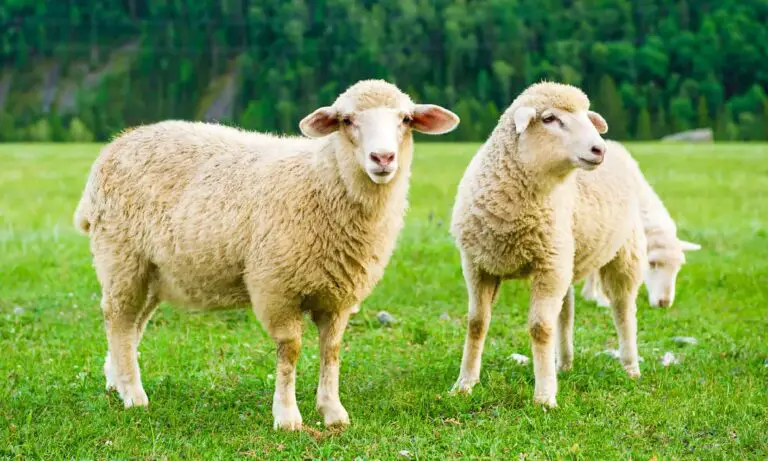Which weight thread is best for sewing leather? What thread size can leave a nice stitch on canvas? Or what does the number Tex35 mean on a sewing thread? As a beginner to sewing, you’ll find yourself with these or similar kinds of questions. But then, you need to have the right kind of thread for your project.
Don’t be the kind of a crafter who just works with whatever at hand. Various types of threads consist of different materials, weight/ thickness, structure, and even finish. So, even though you could use it across various projects, the outcome might not look the same. This includes even the all-purpose thread that we tend to use for most of the general sewing works.
Long story short, our ultimate sewing thread strength chart guide has covered everything you’ll ever need when handing- or machine stitching. Hopefully, you’ll find it helpful for the now-situation and later on throughout your sewing journey.
What’s A Corespun Thread?
In general, it’s uncommon to find a sewer using a monofilament (one long ply) type of thread. Most common sewing threads consist of multiple filaments, with two or more plies. In case you’re wondering, a ply refers to the number of yarns twisted together to produce a single thread. So, when the manufacturer labels that the thread is 3-ply, it means that three yarns have been twisted together to make that single thread.
Meanwhile, a Corespun thread is a type of thread where the base or “core” is a continuous filament polyester, then wrapped with cotton or polyester yarn. Also known as “cottoncore” or “polycore”, this thread structure gives different types of qualities depending on the kind of fibers used. For a model, with a polyester core and outer fiber cotton, the produced thread will be stronger while at the same time soft. It’s the kind of thread you would use in making jeans.
That said though, a corespun thread still has the weakness of cotton which might be unsuited for sewing sturdier materials. So, if your craft entails leatherworking, we would recommend a corded thread. The trick here is that a corded thread comprises multiple threads twisted together. So, it’s not only thicker but also stronger for heavy-duty stitching.
Can I Use All-Purpose Thread On Canvas?
As was mentioned, the all-purpose thread is the most common to DIY and home crafters. It usually has a median profile that’s compatible with nearly all fabrics, and accepts both machine and hand sewing. Whether you want to quilt, construct seams or stitch along the edge, this thread will always deliver. However, it’s not as heavy as heavy-duty thread or thin like that one for embroidery stitching. So, it’s not the best idea for working on heavy canvas or very fine, sheer fabric. The same applies to those projects you know will be subjected to very high heat or even constant contact with direct sunlight.
Some specialty sewing threads you could use for such situations include:
1. Embroidery thread: it can come in a variety of fibers, but rayon and recently polyester is the most common. Rayon embroidery threads have a high sheen and are perfect for lightweight and medium-weight fabric. If working on a heavier fabric, polyester embroidery thread is a better choice as it’s stronger and more colorfast ( not fading).
2. Elastic thread: Just as the name, the type of the thread can stretch and rebound than the regular thread. This makes it a better choice for stretchy/ shirred fabrics like those used in bodices and waistbands.
3. Clear thread: This is the best choice when you need the stitches invisible like in quilting tops. Also known as monofilament thread, it consists of a single strand of synthetic fiber, Nylon, or polyester. Thus, strong and able to withstand tension.
4. Metallic thread: the thread consists of a polyester core wrapped with slivers of metal foil to produce a shiny appearance. It’s mostly for embroidering and sewing decorative stitches. However, it tends to weaken and eventually break when exposed to high heat or even steam. So, not perfect for fire-fighting suits or kitchen apparel.
5. Quilting thread: This one is usually either cotton or polyester fiber, but some will have a blend of both. Unlike the all-purpose type, though, a quilting thread will have extra special finishing to improve performance. Two common finishes given are “gassed” for reducing lint and “mercerized” to enhance e strength and color longevity.
6. Waxed thread: the type of thread is pretty common in leatherworking, which is why some call it Awl Thread. It usually consists of multiple filaments twisted together, then coated with wax to give the water-repelling qualities.
7. Variegated thread: Put simply, the fibers of this thread have alternating shades and colors throughout the entire length. It’s the perfect choice if you need to add a project with decorative stitches but can handle basic sewing as well.
8. Heavy-duty thread: It’s the best option for sewing heavyweight fabrics like duck cloth or canvas. The thread can withstand high stress, plus resistance to UV rays and some even water.
What’s The Best Thread Fiber For Tailoring A Men’s Wool Suit?
Before we can answer the question, a sewing thread can either be plant-based, animal-based, synthetic-based, or a combination of either. The six fibers that we can say are readily available are:
1. Cotton: the thread is made from the boll of a cotton plant, thus great for also sewing plant-based fabrics like cotton and linen. It features a soft and warm feel, plus has a high absorbent than other fibers. Sadly, cotton thread breaks easily under high tension, thus no ideal for leather and stretchy fabrics.
2. Polyester: This is a man-made thread and a choice of many DIY crafters as it’s relatively inexpensive, durable, and easy to maintain. Also, it can withstand moderate heat, albeit it doesn’t absorb moisture well.
3. Rayon: Similarly, rayon is plant-based and a favorite of many for its vibrant colors, plus shine. The thread fiber isn’t as strong as polyester and often weakens when wet. So, we’d recommend it for embroidering, monogramming, or topstitching but not seam construction.
4. Wool: this thread is very common for hand sewing but can also work in machines. It’s soft, durable, warm, and absorbs moisture well. Another thing, the thread is best for wool garments, especially when embroidering a thick fabric or want the design to have a great texture. Note, a wool sewing thread can be pretty expensive and also becomes weak when wet.
5. Silk: as a plant-based fiber, the type of thread will work well with both silk and wool fabric. It’s fine, flexible, and strong, which all are qualities for fine embroidering or tailoring. Also, the sewing thread material holds dye well and resistant to lint.
6. Nylon: this is another man-made fiber but more elastic and in some cases cheaper than polyester. It also doesn’t shrink, though does melt easily, particularly if not bonded. More on that, nylon threads don’t dye well and also will turn yellow when exposed to sunlight constantly.
So, back to our initial question, polyester sewing thread would be better for tailoring suit as it’s strong, durable, and can withstand moderate heat.
The Various Ways Of Measuring Thread
When you know the material and the structure of a thread, it’s very easy to tell if it’s strong enough for your project or not. However, that’s still not enough considering threads behave like knitting yarns, whereby they come in varying thicknesses.
So, the third way you can determine the strength of a thread’s by the measurements labeled on the packet. They include:
1. Thread Weight (wt): the measurement lists how many kilometers a thread has per kilogram. As such, the smaller the number, the heavier/ thicker and stronger the thread. Then, a higher thread weight means it’s lighter/ thinner.
2. Denier Count (Td or d): this one shows how many grams 9000 meters of the thread weigh. Which means the higher the number, the heavier/ thicker the thread, and vice versa. For example, a thread marked as Td225/ d225/ Den 225 means that it’s 225 grams/ 9000 meters.
3. Tex: the measurement list downs how many grams a thread weigh per 1000 meters. If the label shows Tex 35/ T35, it means 1000 meters of the thread weighs 35 grams. Similar to Denver count, the higher the number, the heavier/ thicker the thread.
4. Number Standard: Although it can still give a heads up on the strength of a thread, it’s slightly tricky to use. But different from the thread weight, Denier Count, or Tex, this method doesn’t have a definite measuring rule. We aren’t sure how manufacturers determine it, although the lower number often has a thicker thread. For instance, thread NO. 30 is thicker/ heavier than No. 50 thread.
Minimum Needle Size Required And Sewing Thread Strength Chart
The following chart can help you understand the various measurement systems and the best needle size to use.
1. Polyester Thread
| Needle Size | Thread Size (Tex) | Commercial Size | Government Size | Tensile(in lbs) | Diameter(in inch) |
| 10-12 | 16 | 15 | A | 2.21 | 0.0047 |
| 12-14 | 30 | 30 | AA | 3.7 | 0.0070 |
| 14-16 | 45 | 46 | B | 7.09 | 0.0080 |
| 16-18 | 70 | 69 | E | 10.13 | 0.0107 |
| 18-20 | 90 | 92 | F | 13.48 | 0.0124 |
| 20-22 | 135 | 138 | FF | 20.64 | 0.0152 |
| 22-24 | 210 | 207 | 3-cord | 30.72 | 0.0186 |
| 24-26 | 270 | 277 | 4-cord | 40.12 | 0.0231 |
| 26-38 | 350 | 346 | 5-cord | 51.53 | 0.0258 |
2. Nylon Thread
| Needle Size | Thread Size (Tex) | Commercial Size | Government Size | Tensile(in lbs) | Diameter(in inch) |
| 10-12 | 16 | v-15 | A | 2.22 | 0.0059 |
| 12-14 | 30 | v-30 | AA | 4.88 | 0.0080 |
| 14-16 | 45 | v-46 | B | 7.4 | 0.0094 |
| 16-18 | 70 | v-69 | E | 11.31 | 0.0115 |
| 18-20 | 90 | v-92 | F | 15.16 | 0.0133 |
| 20-22 | 135 | v-138 | FF | 23.8 | 0.0163 |
| 22-24 | 210 | v-207 | 3-cord | 34.8 | 0.0200 |
| 24-26 | 270 | v-277 | 4-cord | 49.07 | 0.0231 |
| 26-38 | 350 | v-346 | 5-cord | 53.12 | 0.0258 |
Ps. Commercial size is the common US measurement for heavy-duty threads. It’s represented as (V) and comprises the thread’s denier divided by 10. For example, the V-69 commercial size should have a denier count of 690 (69 x 10).
As we mentioned, you can also see from the table the thickness and the tensile strength increases with the Tex measurement.
Final Thoughts:
As you compare different types of sewing threads, take note of the thickness. The needle you use should have an eye 40% larger. If you’re looking for the best thread size for sewing canvas, the middleweight thread V-69 (or otherwise Tex 70) has the required qualities. It leaves an inconspicuous stitch, has enough tensile strength, and also it’s the heaviest home sewing machines can handle.
Another thing you should know is that the finish of the thread is very crucial, especially when working on special projects. The various types of thread finish you can find are gassed, mercerized, fire retardant, glazed (waxed), bonded, and bonded. If the fibers are untreated, the type of finish is what we call unmercerized. It’s the perfect choice when sewing towels and dishcloths because of its absorbent nature.







